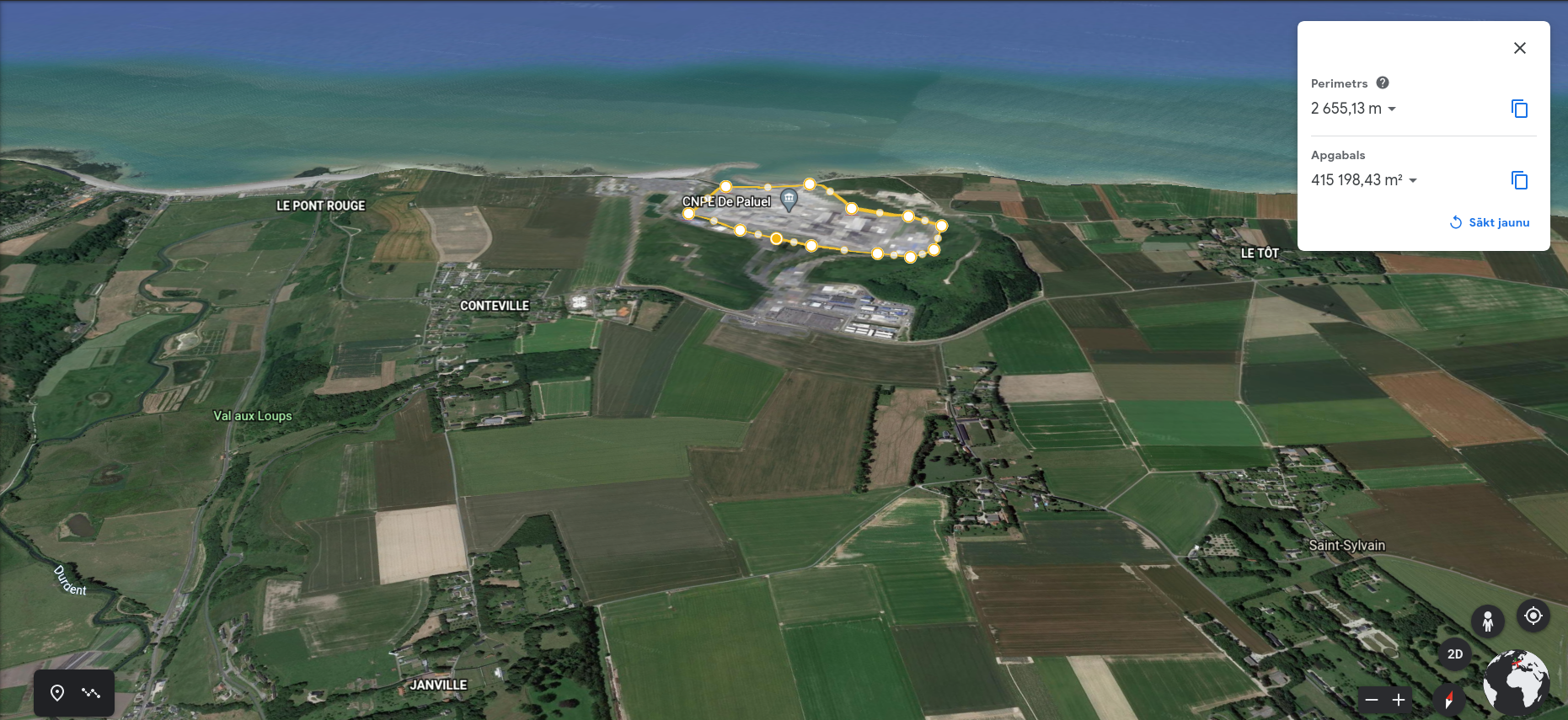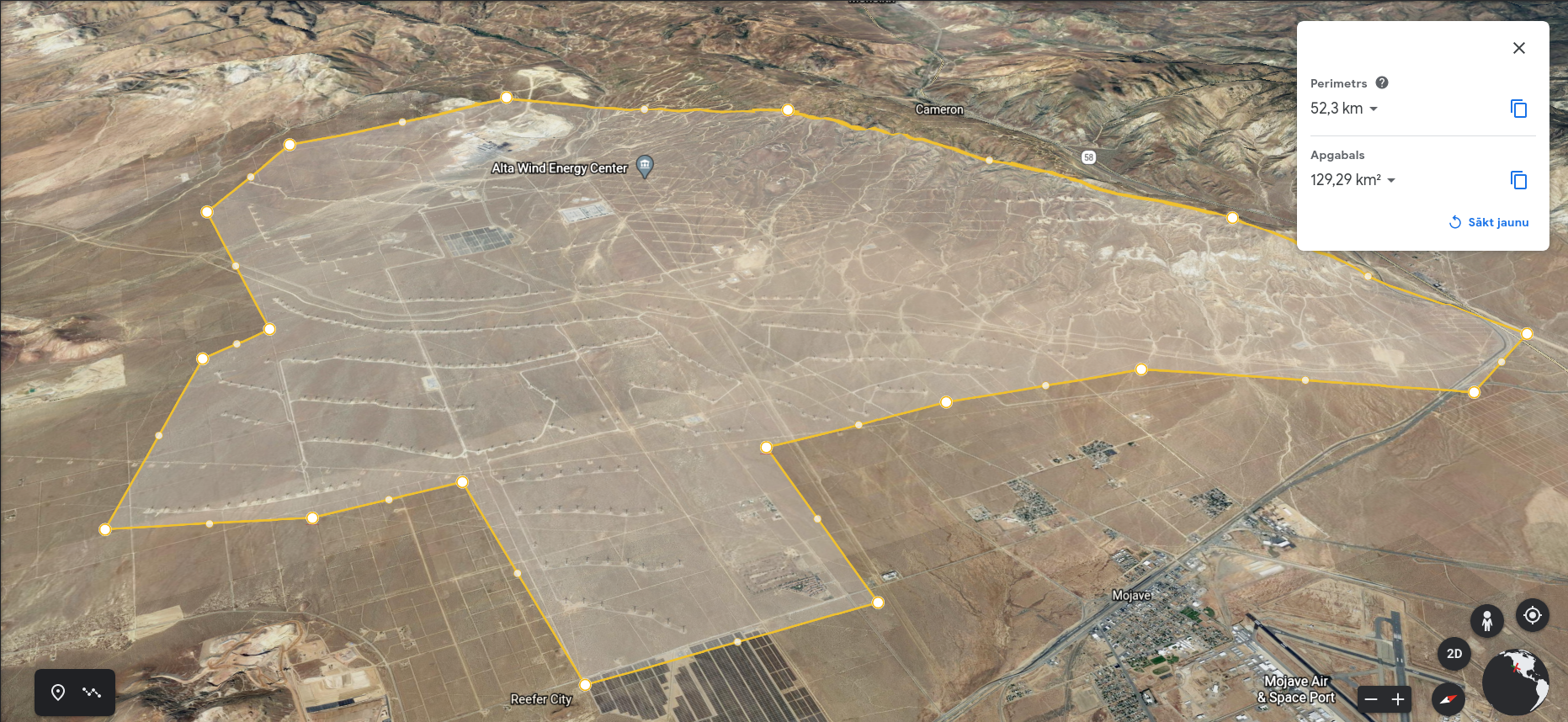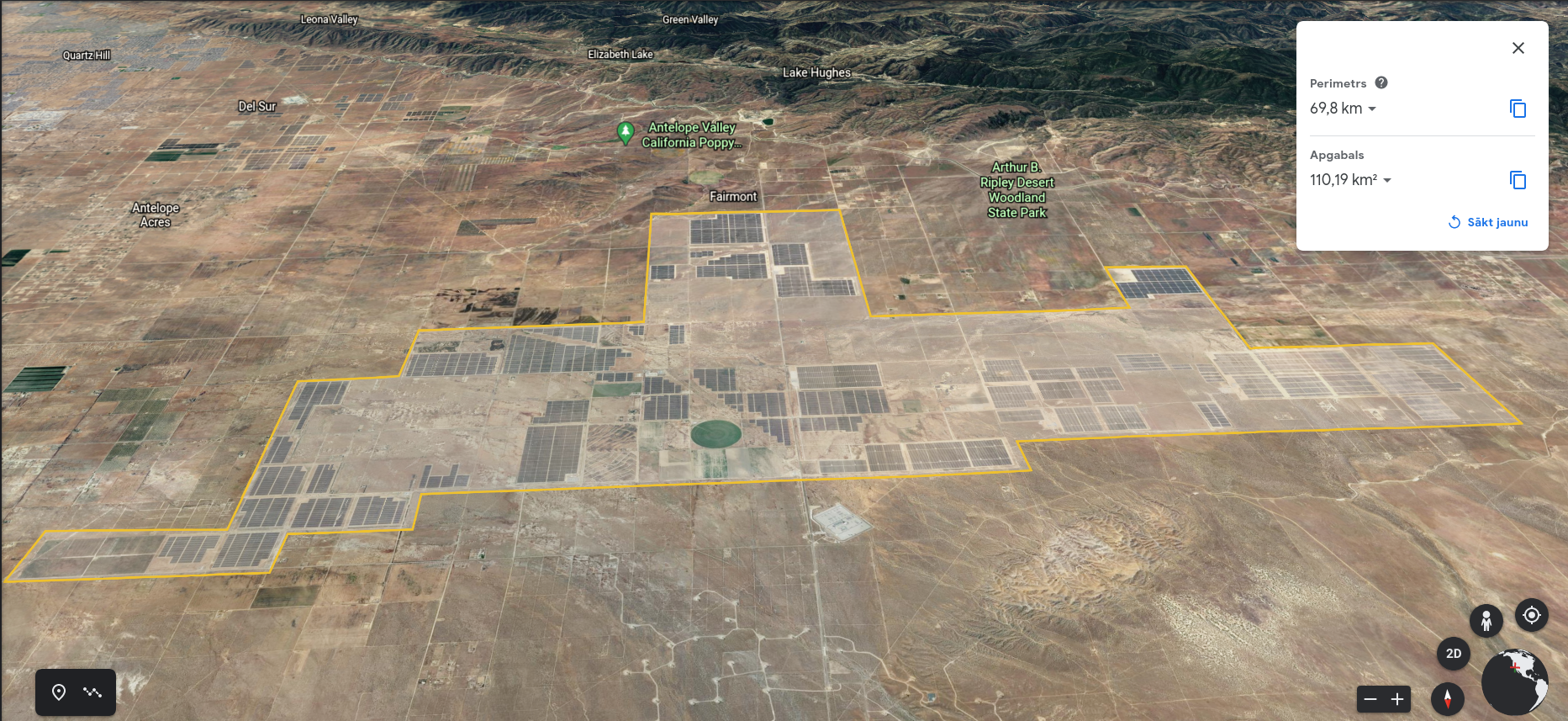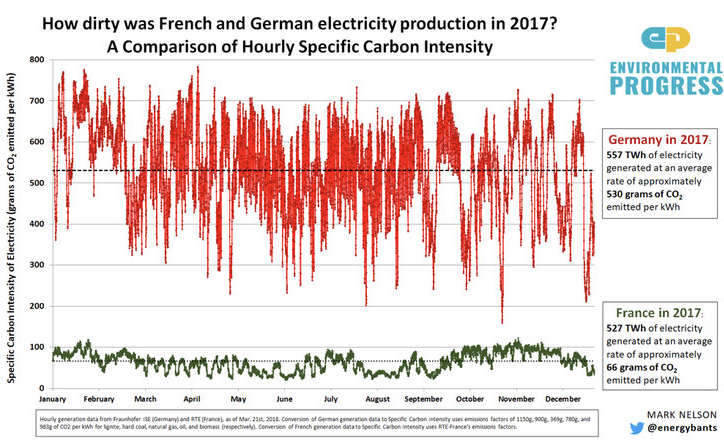Abut energy idols and energy scrapers
The Bible warns to not sink into idolatry — "Although they claimed to be wise, they became fools and exchanged the glory of the immortal God for images made to look like a mortal..They exchanged the truth about God for a lie, and worshipped and served created things rather than the Creator.." (Romans 1:23-25).
Solar panels, wind turbines and their apostles — tide and wave stations — have become energy idols. These are weak and unreliable sources of energy, that our ancestors abandoned long ago, but "progressive" enthusiasts mistakenly assume they are "green", "renewable" and will solve global warming.
Looking at scale of age of universe, there are no renewable resources, only primordial resources. Solar energy is the primordial energy we get from fusion in the Sun and it is created by the Big Bang. Wind energy comes from temperature difference caused by the fission of radioactive elements in depths of the Earth and sunlight. Fossil fuel is much newer than primordial fuel, as it was produced only a few hundred million years ago from dead algae and palms, when there were no fungi or bacteria which eat them.
As the chemical energy stored in coal and oil has only been stored for millions of years and is millions of times weaker than nuclear energy, we have depleted these resources quite seriously only in a hundred of years. Nuclear energy is millions times stronger than chemical energy and available deposits are thousands times bigger, so this energy will be available to us for billions of years.
Energy is a characteristic of something (environment, system) that indicates how much work it could do. Energy cannot be created from anything and it does not disappear anywhere, but it moves from a concentrated and easy-to-use form to a diluted and practically unusable one according to the laws of thermodynamics.
As concentrated energy dissipates, we can use this energy stream in a way useful to us. If the energy flow is quick and dense, device to handle it may be small and efficient. If the current is diluted and slow, needed device is large and inefficient, because we can use only a small part of already diluted energy.
Civilization has existed for thousands of years and for thousands of years the source of energy has been work of animals (including humans, slaves or servants), sunlight, water and wind. All of these sources are weak and a intermittent (and some of them may rebel or even make revolutions), so even the rich could not afford the standard of living of an industrialized world — clean water, sanitation, warm house and electricity. At a time, when available energy was weak and intermittent, it was expensive and therefore materials were expensive. Although concrete, asphalt, glass and metals were known for centuries, modern roads, bridges and cities could not be built not so much because lack of knowledge, than because lack of energy.
The Industrial Revolution began with the use of coal. When we could pump water with steam pump fired by coal, we didn't need mules or horses anymore. A train, that used coal, no longer had to be stopped like a horse-drawn carriage to rest and feed horses. Steamship no longer had to wait for the tail-wind like sail ship. When coal was replaced by oil, energy production became even easier because it is much easier to work with liquids than with hard, bulky things.
The size of the device does not reflect the power of it or the energy produced. A huge wind turbine is thousands of times weaker than a steam or hydro turbine because it uses dissipated energy. For example, the standard capacity Palulel nuclear power plant occupies barely 0.6 km², but its capacity is 5.3GW and it produces 21GWh/year.
Water is 800× denser than air, so it has more energy in it, but raw water energy is also quite weak. Therefore, it is necessary to create dams, where this energy can be collected in manageable place. Only thanks to fossil fuel-powered devices was it possible to move large masses of land to create modern dams, and that is why in the beginning of 20. century hydroelectric power plants grew on rivers like mushrooms after the rain. Depending on the location of the hydroelectric power plant with a capacity of around 2GW, the dams can occupy only a few square kilometers, such as Dixas dam, which produces 2TWh/year and occupies only 4km², or several thousand, as the Zhiguli power plant with 2.5GW capacity, which produces 12TWh/per year and occupies 6500km². Unlike wind turbines and solar panels, batteries for hydroelectric power plants are included in the price. Depending on the amount of water stored in the dam and the power of the station, there is enough water to run them for days or even months.
Nuclear generators operate an average of 24 hours 360 days a year. If wind turbines could run continuously and at maximum load, at least 400 wind turbines would be needed to replace one steam turbine. But wind turbines do not work at full load and sometimes do not work at all. Therefore, the actual capacity provided is around 30% and at least 800 wind turbines are needed to replace the steam turbine. The capacity of the Alta wind farm is 1.5 GW, but it occupies 100 km² and produces only 3.2GWh/year. In order to produce as much as the Palulel nuclear power plant, it would have to occupy 650 km².
In order to obtain energy more efficiently, air currents could be collected in the same way as water in dams. But the air is 800× thinner than water, respectively "dams" should be so times bigger. Catching wind is so inefficient that, only more foolish thing one can do, is to sequester carbon dioxide not using trees, once it has been emitted by fossil fuel stations into environment.
Wind turbines kill not only birds, but also insects. We can hope that birds will learn to avoid wind turbines, but we cannot hope for wisdom of insects. Where insects disappear, the ecological balance changes significantly and in practice these places can turn into a "green desert", where modest plants (such as genetically modified monocultures) can grow, but there is virtually no other life there. Due to the hight of wind turbines, their maintenance (including washing dead insects from the blades) is complicated and dangerous. Proponents of wind energy conceal that they produce unpleasant, cyclical noise and lighting changes that negatively affect both humans and animals.
Because the Sun does not shine at night, solar panels produce no more than half of the time (which can fluctuate depending on the season). And, even when power is produced, it is affected by the height of the Sun in the sky, as well as clouds and dust in the air. Therefore, the average power of solar panels is not more than 15% of the maximum power. The capacity of the "Solar star" solar panel station is 1.6GW, but it occupies 230 km² and it produces only 1.7 GWh/year.
In order to produce energy similar to the Palulel nuclear power plant, it would have to occupy 2800 km². Unlike wind turbines, solar panels have no moving parts, do not have to be lifted at high altitudes and do not make noise. But in places far from the equator, the most energy is needed in winter, when there is virtually no use of solar panels. Due to the large surface area of panels, they are often destroyed by storms. If these panels are not placed on the roofs of houses, but on the ground, a desert forms under them, because nothing grows in the dark. Bare soil creates dust and therefore panels need to be cleaned frequently.
Theoretically, it is possible to build solar panels with 10 — 20 times margin and hope that energy stored in batteries can be used at night. But batteries are expensive, and it would lead to the collapse of civilization if large volcanic eruption would come like in year 536, which caused a two year winter around entire world.
To those, who's homes are supplied with water and heat through pipes, electricity through wires and all things are delivered from e-shops, are not aware of how much resources and energy are spent behind scenes. In Latvia, where big cars and big houses are not as leading fashion as in the United States, several tons of fossil fuel are used per person per year. In Kuwait, Qatar or the United States they are tens of tons of pollution.
Every human activity has an impact on the environment, including energy production. If we want to protect nature, we must choose ways of obtaining energy that disturb nature less. But if we capture energy from weak sources, we need to take more areas from nature than with powerful sources.
When somebody talks about "renewable" (actually weak) energy sources, he almost always mentions, how many thousands of households they can support, because households consume very little energy compared to production and transport. Even with my small and economical electric car, I use more electricity in 20 minutes driving, than with all other home electrical appliances for entire day. Nowhere in the world modern infrastructure is created with weak and unreliable energy sources. It is completely unfounded to hope that this will be done somewhere in Africa or South America. Rather, it is perfectly reasonable to think that technologically advanced countries are imposing "green" (in fact inefficient) technologies in order to hinder their development and restrict competition.
Many industries need not only large, but also continuously available energy. In order to melt metal or burn cement, energy must be available continuously for months. If they miss it for only for one day, production can stop for a month and become so expensive, that production with unreliable energy sources is no longer economically viable.
Germany chose to shut down nuclear power plants and began building wind turbines and solar panels instead. As a result, they still use both coal and gas, and their CO₂ emissions per unit of energy are 10× higher and electricity 4× more expensive than in France, where much of the electricity is still generated by nuclear power plants. Virtually everywhere, where are wind turbines, there are activist groups against them.
In the US state of California, where a significant amount of electricity is generated by sunlight and wind, electricity has become much more expensive and supply has become much more unreliable.
Wind turbines and solar panels are the cheapest way to generate electricity only if you forget to take into account that they have unreliable supply and require batteries or other reserve capacities, long transmission lines and huge areas of Earth. Weak and unreliable energy sources — wind turbines, solar panels, tidal and wave stations, etc. creates more problems than they solve. They are not as "green" as proponents of these technologies declare and cannot be used as a foundation for electricity generation. Electricity generated from weak and unreliable sources is not electricity, but electricity waste. Electricity waste, like other waste, is electricity that no one needs. Electricity based on whims of nature is cheap, only when production of waste electricity is counted valuable thing.
Instead of obtaining reliable energy from a primary source — nuclear energy, scraper allow the Sun to convert it into light, the Earth to convert it into heat, the resulting temperature difference of air into wind. And then energy scrapers try to convert it into electricity. Energy scrapers have learned about radiation from comics and Hollywood movies, where it is shown as a deadly virus with the power of an nuclear bomb. Therefore, they are afraid of radiation like the devil from cross, and do not want to obtain energy in nuclear power plants reliably and without emissions. Instead, they pick up energy crumbs everywhere they can find, similarly as medieval steppe shepherds picked up dried cow dung. Of course, you can survive by collecting dungs of n-times digested energy, but it is not easy and modern life.
"Greens" regularly talk that we need "energy mix". But, if we have nuclear power, then producing energy with solar panels, wind turbines, tidal and wave stations is the same, as going to the street for begging after regular, well-paid job. As the Sun overwhelms stars during the day, nuclear energy overwhelms all other forms of energy, and they are not needed only in places, where energy needs are so small, that nuclear reactor would be overkill.
If there had been no Cold War at the end of the 20th century and most of humans were not taught to ignore differences between nuclear weapons and nuclear reactors, we would already got all the energy we need from nuclear power plants and no longer used fossil fuels. Nuclear energy is the safest way to obtain energy, and if we asked wild animals for their opinion, they would vote for nuclear energy with all their limbs.
Nuclear energy increases national independence because, unlike oil and coal, which are concentrated in few places on earth, nuclear fuel can be extracted virtually anywhere and is easy to store for many years. Nuclear energy is expensive only because of paranoid safety restrictions and controls, and therefore it is currently only feasible to build very large nuclear reactors. But with realistic regulations small, modular reactors are much more economical. Of course, radiation is dangerous. But it is no more dangerous than fire or chemicals. Of course, nuclear energy can be used for weapons. But ability to use energy in weapons is an indicator of its quality. No one has tried to use wind or waves as a weapon, nor has sunlight. If the miraculous moment will come and world's great powers will start using sails and solar panels on their warships, it may indicate that this energy could be used in other places as well. And we don't need to wait for nuclear fusion. Fusion has been "20 years around the corner" for 50 years and, although the technology is much more complex, it is not principally different than nuclear fission. Fusion will not solve the problem of nuclear weapons either, fusion can produce materials suitable for nuclear weapons also, just with little bit more effort.
To achieve carbon neutrality worldwide, 2 nuclear power plants or 3000 wind turbines need to be built every day for 15 years in a row. If the first solution only lacks courage, then the second solution is practically impossible.
If we go the way of the energy idolatry, sooner or later we will realize that energy is too expensive and is not enough for all of us. But the world's greatest disasters have begun with people realizing that "it will not be enough for everyone" and instead of creating new resources and opportunities using modern technology, they start spending already insufficient resources to take them away from others.
Our ancestors left wind behind, to not depend on the weather. Electric lighting put an end to dependence of sunlight. We will not be able to spend more energy indefinitely, but we don't have to worsen our lives to level of medieval farmers "for ecological reasons".
In a few billion years, the Sun will turn into a red giant and will swallow the Earth (and a billion years before that, conditions on Earth will no longer allow life, but they are just nuances). If we don't want to remain just a soot layer in the rocks of the Earth, our main task is to spread civilization (exactly civilization, not just life) outside the Earth — first in the Solar system and then further. Therefore we need to make "remote backups of civilization", and in the long run exploration of space is the most important task. Of course, there are no oil and coal on other celestial bodies, so fossil fuel burning technologies will not have use. But other celestial bodies also do not have flowing water, windy air and sunlight may be scarce. In addition, solar panels can only use blue light. As the Sun gets older, it will become redder and its light will no longer be able to cause a photo effect and solar panels will not generate electricity any more. Therefore, in the long run, wind turbines, solar panels and wave or tidal stations are as inappropriate technology, as burning coal and oil. The only universal and sustainable source of energy is nuclear energy.
If, before we master nuclear power and other planets, we will experience a global cataclysm (a meteorite or huge volcanic eruption) that will destroy civilization (but perhaps will leave life), it is very unlikely that civilization will reemerge. Because our descendants will no longer have easy-to-use energy sources on which to build civilization again. Then with our sad experience we will show, how the Great Filter works.
However, I hope that in the development of civilization we will not go wrong.
Created by Valdis Vītoliņš on 2020-10-03 15:45
Last modified by Valdis Vītoliņš on 2025-12-22 17:35








